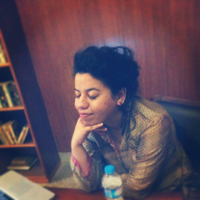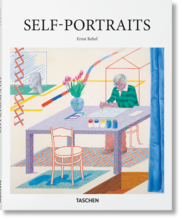More about Edvard Munch
- All
- Info
- Shop

Contributor
Woe upon woe befell Edvard Munch, the artist behind one of art history’s most recognizable paintings, The Scream.
Ever wonder what drove him to paint that swirling, red, screaming inner anguish that resonates with so many of us? Well, the fact that his mother, one of his sisters, and his only brother all died during his youth may have something to do with him becoming the poster child of tragedy. Oh, and another one of his sisters spent the better part of her life locked up in a mental asylum. He was dealt a tough hand.
Despite all the grimness the Munch kids already had to face, their father still liked to tell them scary ghost stories at night. Edgar Allan Poe was his choice for bedtime reading material. Questionable. Daddy was also a religious fanatic and constantly attempted to imbue a creepy amount of morals in his kids by telling them stuff like their mom was looking down at them from heaven and was disappointed in them when they were being naughty! Munch blamed his father somewhat for his own mental condition, which sounds about right.
All this led to Munch's nervous breakdown in 1908. Well, all that and lots of heavy drinking. He spent eight months institutionalized for hearing voices and for temporary paralysis of one side of his body. But in his distress, he found inspiration. During all these personal upheavals, Munch managed to produce one of the most iconic images of the 20th century. It sorta makes you feel bad about crying over a canceled TV show, huh? But no judgments here.

Contributor
Edvard Munch's artwork is highly personalized.
"In my art," Munch said, "I attempt to explain life and its meaning to myself." If The Scream is any indication, Eddie had some demons in that respect. Perhaps that's why he was a hopeless alcoholic.
Munch never married but had many friends with benefits. He was shot in the left hand by one of his mistresses when he tried to end their affair. Fortunately for him and future art historians, the painter was right-handed.
Featured Content
Here is what Wikipedia says about Edvard Munch
Norwegian: [ˈɛ̀dvɑɖ ˈmʊŋk] ; 12 December 1863 – 23 January 1944) was a Norwegian painter. His 1893 work The Scream has become one of Western art's most acclaimed images.
His childhood was overshadowed by illness, bereavement and the dread of inheriting a mental condition that ran in the family. Studying at the Royal School of Art and Design in Kristiania (today's Oslo), Munch began to live a bohemian life under the influence of the nihilist Hans Jæger, who urged him to paint his own emotional and psychological state ('soul painting'); from this emerged his distinctive style.
Travel brought new influences and outlets. In Paris, he learned much from Paul Gauguin, Vincent van Gogh and Henri de Toulouse-Lautrec, especially their use of color. In Berlin, he met the Swedish dramatist August Strindberg, whom he painted, as he embarked on a major series of paintings he would later call The Frieze of Life, depicting a series of deeply-felt themes such as love, anxiety, jealousy and betrayal, steeped in atmosphere.
The Scream was conceived in Kristiania. According to Munch, he was out walking at sunset, when he 'heard the enormous, infinite scream of nature'. The painting's agonized face is widely identified with the angst of the modern person. Between 1893 and 1910, he made two painted versions and two in pastels, as well as a number of prints. One of the pastels would eventually command the fourth highest nominal price paid for a painting at auction.

As his fame and wealth grew, his emotional state remained insecure. He briefly considered marriage, but could not commit himself. A mental breakdown in 1908 forced him to give up heavy drinking, and he was cheered by his increasing acceptance by the people of Kristiania and exposure in the city's museums. His later years were spent working in peace and privacy. Although his works were banned in Nazi-occupied Europe, most of them survived World War II, securing him a legacy.
Check out the full Wikipedia article about Edvard Munch




















